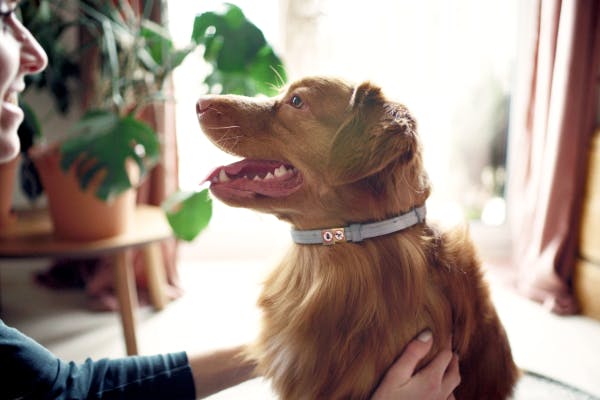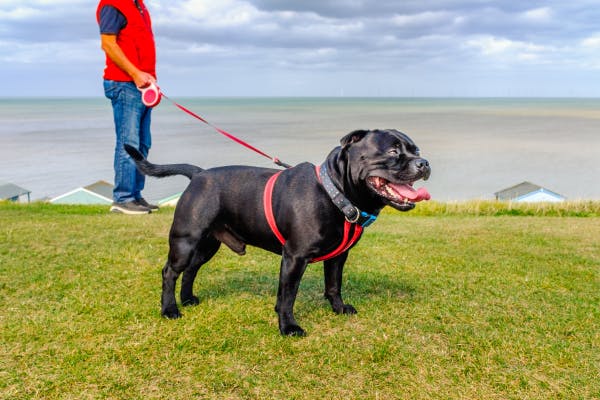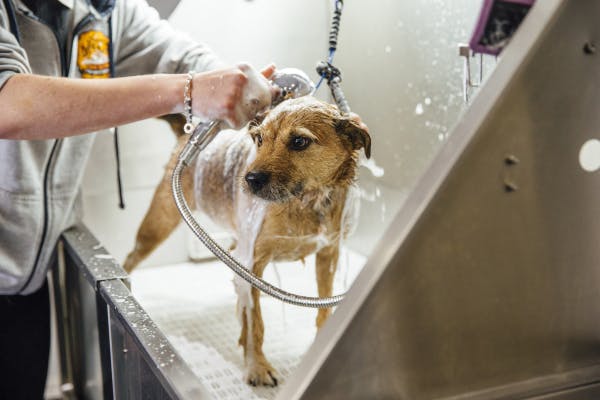learn about puzzle toys for dogs
How Interactive Puzzle Toys Help Stimulate Your Dog's Brain
Interactive puzzle toys enhance cognitive function, prevent boredom, improve digestion, increase exercise, reduce anxiety, and support healthy aging in dogs.
Boost Your Dog's Brainpower with Interactive Puzzle Toys
The Benefits of Interactive Puzzle Toys for Dogs
Interactive puzzle toys provide numerous advantages for dogs, contributing to their overall well-being. These toys are designed to involve your dog in problem-solving activities, which can help enhance cognitive function and prevent boredom-related behavior issues. Some of the main benefits of interactive puzzle toys for dogs include:
Improved digestion and weight management: Food-dispensing puzzle toys can slow down your dog's eating speed, helping to avoid indigestion and vomiting. Moreover, by dispensing smaller amounts of food over time, these toys can assist in managing your dog's weight more effectively.
Increased exercise: Dogs require regular exercise to maintain their physical health. Interactive puzzle toys promote movement and mental stimulation, providing a mix of physical and mental exercise that helps keep your dog in good shape.
Boredom relief: Bored dogs often engage in destructive behaviors as a form of self-entertainment. Puzzle toys can occupy your dog's mind and help prevent boredom-related mischief.
Anxiety reduction: Dogs with separation anxiety can become distressed when left alone. Food puzzles can act as a distraction, helping to decrease anxiety by keeping your dog's mind focused on a task.
Support for healthy aging: Just like humans, aging dogs can benefit from mental exercises to maintain cognitive function. Puzzle toys offer problem-solving challenges that help keep your dog's mind sharp as they age.
Fun and entertainment: Dogs enjoy a good challenge, and puzzle toys provide hours of entertainment and mental stimulation.
Mental Stimulation: Essential for Your Dog's Cognitive Abilities
Mental stimulation is vital for maintaining or enhancing your dog’s cognitive abilities at any age – from curious puppies all the way up through senior dogs experiencing cognitive decline.
Interactive puzzle toys are an effective way to provide this crucial brain workout. These toys challenge your dog's mind, promoting the development of problem-solving skills while offering a fun and rewarding experience. By incorporating puzzle toys into your dog's daily routine, you can help alleviate boredom, reduce anxiety, improve problem-solving skills, support memory and learning, and encourage healthy aging.
Contrafreeloading: The Science Behind Dog Puzzle Toys
Contrafreeloading is a fascinating concept in animal psychology that describes animals preferring to work for their food even when it is freely available. This phenomenon has been observed across various species – including dogs. Contrafreeloading taps into the mental and physical stimulation that comes from working for food.
Dog puzzle toys utilize this concept by giving dogs a way to work for their food. These toys often hide treats or kibble inside compartments that require the dog to solve a puzzle or complete a task to access the food. By using these toys, you can provide your pet with the mental and physical stimulation they crave while also promoting problem-solving skills and preventing boredom.
Selecting Dog Puzzle Toys with Varying Difficulty Levels
Dog puzzle toys come in various levels of difficulty – from beginner puzzles designed for dogs new to problem-solving tasks up through advanced puzzles meant for highly intelligent pups.
By choosing the appropriate level of difficulty based on your dog's current abilities (and gradually moving on to more advanced puzzles as they improve), you'll be able to keep them engaged and challenged at all times. This will help enhance their cognitive abilities while also giving them a fun and mentally stimulating activity they’ll love!
Interactive puzzle toys play a crucial role in stimulating your dog's brain health while promoting overall well-being. Incorporating these engaging activities into your pet’s daily life will help keep them mentally sharp – plus offer plenty of entertainment!
best puzzle toys for dogs
- our rating89 out of 100
- our rating88 out of 100
- our rating87 out of 100
Incorporating Interactive Puzzle Toys into Your Dog's Training Routine
Interactive puzzle toys can significantly improve your dog's training routine by providing mental stimulation, reinforcing positive behaviors, and strengthening the bond between you and your pet. Here are some helpful tips on effectively incorporating puzzle toys into your dog's training.
Use puzzle toys as rewards
Think about using puzzle toys filled with treats or kibble instead of traditional treats during training sessions. This approach not only offers mental stimulation but also reinforces the positive behavior you're teaching. For example, when teaching your dog to sit, reward them with a treat-dispensing puzzle toy once they successfully perform the command.
Combine puzzle toys with obedience training
You can use puzzle toys alongside obedience training to reinforce commands and enhance your dog's problem-solving skills. Try placing a treat-filled puzzle toy on the ground and instructing your dog to "wait" before allowing them to interact with it. This exercise teaches impulse control and patience while also engaging their mind.
Use puzzle toys for distraction during training
If your dog tends to get easily distracted during training sessions, incorporate puzzle toys to maintain their focus on the task at hand. For instance, if working on leash manners and your dog is prone to pulling or becoming distracted by surroundings, use a treat-dispensing toy as a reward for keeping a loose leash and staying focused on you.
Incorporate puzzle toys into crate training
Crate training can be challenging for some dogs; however, using puzzle toys makes it more enjoyable and less stressful for them. Encourage your pet to enter the crate willingly by placing a treat-filled toy inside it—this creates positive associations while offering mental stimulation at the same time.
Use puzzle toys for socialization
Puzzle toys can help when socializing dogs in new environments like meeting other animals at parks or visiting friends' homes because they keep pets calm while focusing their attention away from distractions.
Practice problem-solving skills
Incorporating puzzle toys into your dog's training routine can enhance their problem-solving abilities and cognitive functions. Set up various puzzle toys with different difficulty levels and encourage your dog to solve them—this not only stimulates their mind but also boosts confidence in tackling new challenges.
Create a positive association with training
Utilizing puzzle toys during training sessions helps establish a positive connection with the process itself. Rewarding your dog with an engaging toy reinforces the idea that training is enjoyable, making them more likely to engage willingly in future sessions.
Interactive puzzle toys can be an excellent addition to your dog's training routine as they offer mental stimulation, reinforce positive behaviors, and strengthen the bond between you both. By incorporating these toys into various aspects of your dog's training, you create an engaging experience that benefits both you and your furry friend.








